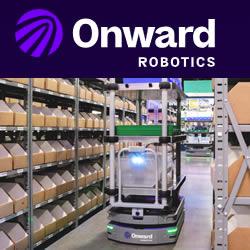Robotic Hospitals
Education in Robotic Surgery
A robotic technology stack aimed at developers on a budget
ROBO, The First Robotics & Automation ETF, Hits $1 Billion in Assets Under Management
How Robots Using Amazon Alexa Could Help Injured People Be More Mobile at Home
Why Co-Parenting With Telepresence Robots Could Be a Fantastic Idea
Robotics, artificial intelligence fund has tripled the Dow this year
Robert Shiller: Fear of robots is driving the market rally
Amazon Robotics Challenge 2017 won by Australian budget bot
Soft Stretchy Sensors
Be Polite to Machines!
Open Board for 3D Gesture Control, Motion Capturing, Tracking and Robotics
Teaching Drones How To Crash Safely
As California's labor shortage grows, farmers race to replace workers with robots
Robotics experts dismiss Musk's call for AI regulation
Records 1006 to 1020 of 1431
First | Previous | Next | Last
Mobile Robots - Featured Product

